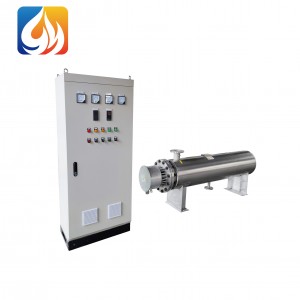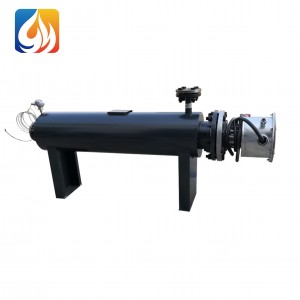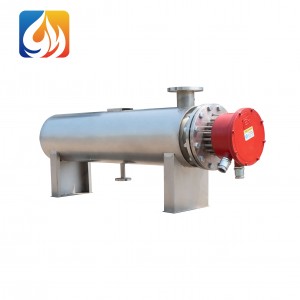Sewage treatment electric heater
Working principle
Sewage treatment electric heater working principle is mainly based on the process of converting electrical energy into heat. Specifically, the electric heater contains an electric heating element, usually a high-temperature resistance wire, which heats up when the current passes through, and the resulting heat is transferred to the fluid medium, thus heating the fluid.
The electric heater is also equipped with a control system, including temperature sensors, digital temperature regulators and solid-state relays, which together form a measurement, regulation and control loop. The temperature sensor detects the temperature of the fluid outlet and transmits the signal to the digital temperature regulator, which adjusts the output of the solid state relay according to the set temperature value, and then controls the power of the electric heater to maintain the temperature stability of the fluid medium.
In addition, the electric heater may also be equipped with an overheat protection device to prevent the heating element from overtemperature, avoid medium deterioration or equipment damage due to high temperature, thereby improving safety and equipment life.
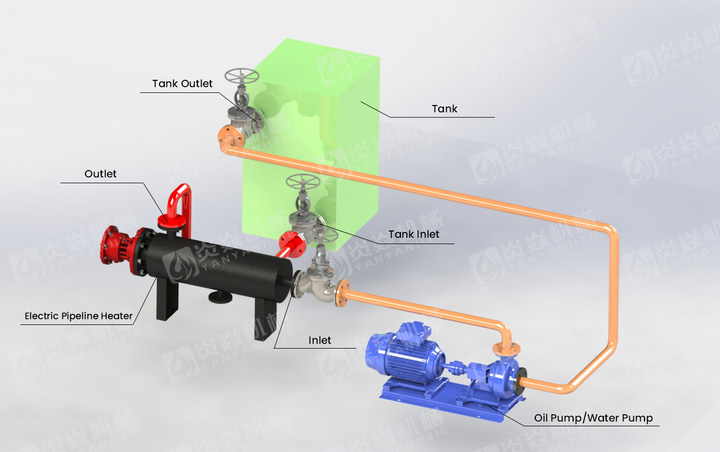
Product details display
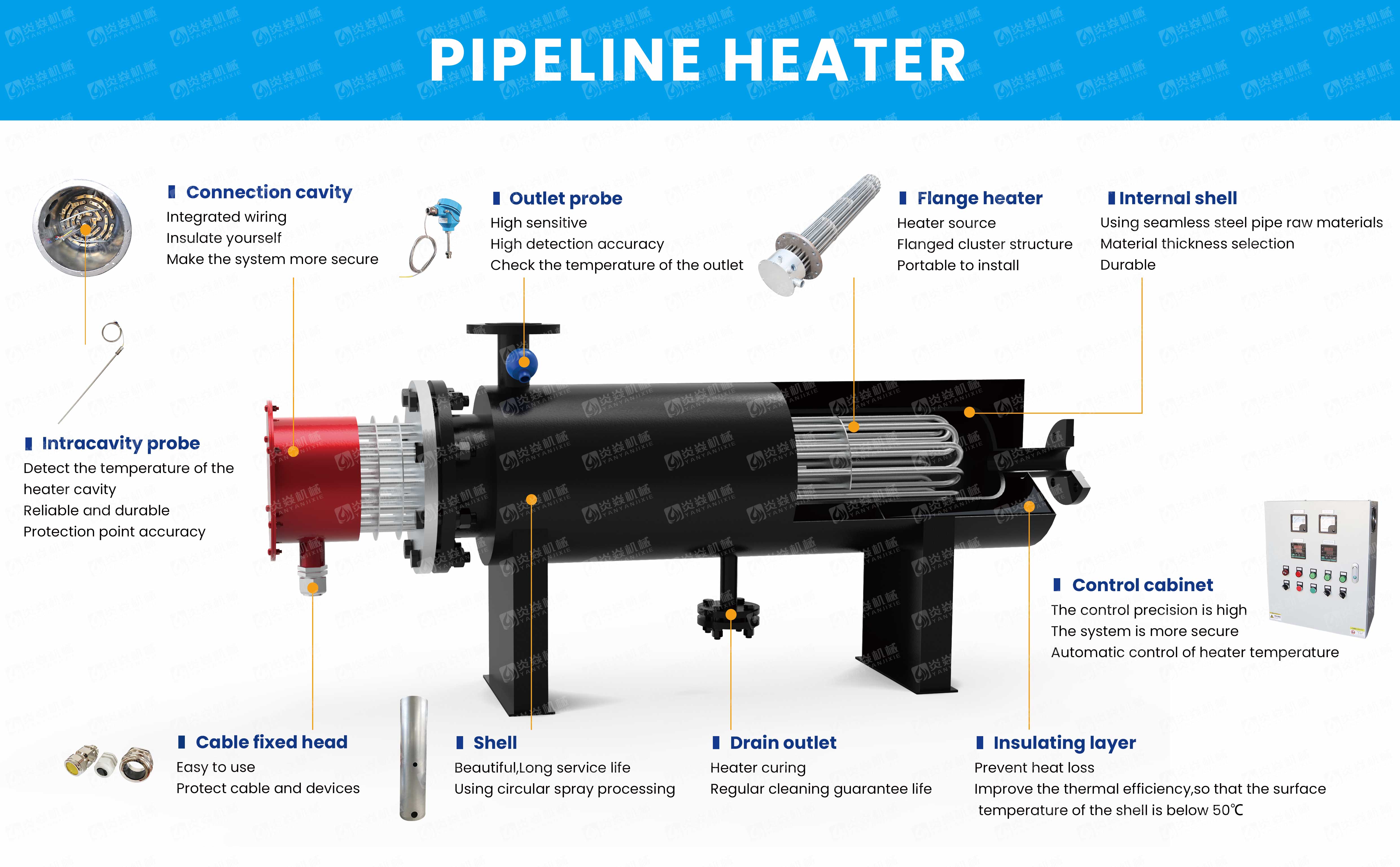

Working condition application overview
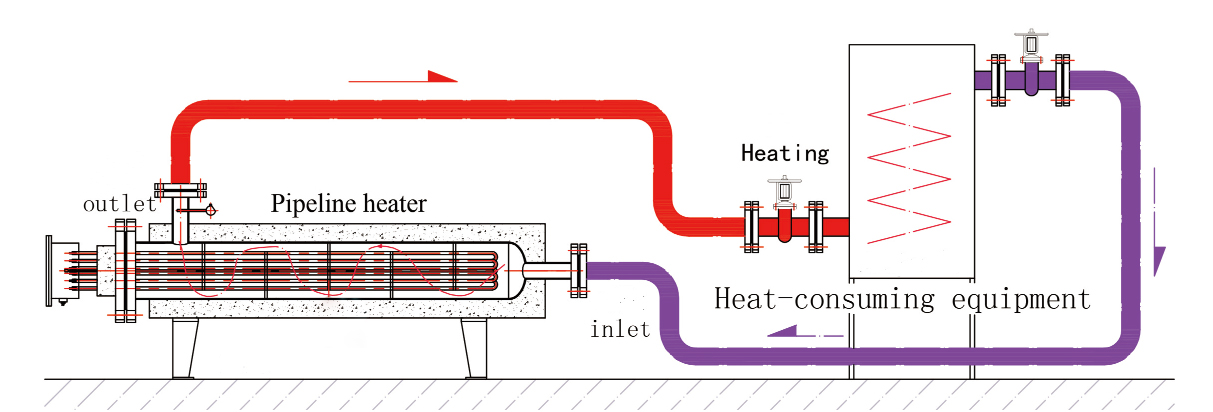
1) Overview of sewage heating pipeline electric heater
The electric heater is a kind of equipment which is mainly used for sewage heating in sewage treatment project. The electric heater converts electrical energy into heat energy to realize the heating effect of the sewage heating pipe and improve the efficiency and quality of the sewage treatment process.
2) Working principle of electric heater of sewage heating pipeline
The working principle of the electric heater in the sewage heating pipeline can be divided into two parts: electric energy conversion and heat transfer.
1. Electric energy conversion
After the resistance wire in the electric heater is connected to the power supply, the current through the resistance wire will produce energy loss, which is converted into heat energy, heating the heater itself. The temperature of the heater surface increases with the increase of the current, and eventually the heat energy of the heater surface is transmitted to the sewage pipe that needs to be heated.
2. Heat conduction
The electric heater transfers heat energy from the surface of the heater to the surface of the pipe, and then gradually transfers it along the wall of the pipe to the sewage in the pipe. The process of heat conduction can be described by the heat conduction equation, and its main influencing factors include pipe material, pipe wall thickness, thermal conductivity of heat transfer medium, etc.
3) Summary
The electric heater converts electrical energy into heat energy to realize the heating effect of the sewage heating pipeline. Its working principle includes two parts: electric energy conversion and thermal heat transfer, of which thermal heat transfer has many influencing factors. In practical applications, the appropriate electric heater should be selected according to the actual situation of the heating pipeline, and reasonable maintenance should be carried out.
Product application
Pipeline heater widely used in aerospace, weapons industry, chemical industry and colleges and universities and many other scientific research and production laboratory. It is especially suitable for automatic temperature control and large flow high temperature combined system and accessory test, the heating medium of the product is non-conductive, non-burning, non-explosion, no chemical corrosion, no pollution, safe and reliable, and the heating space is fast (controllable).
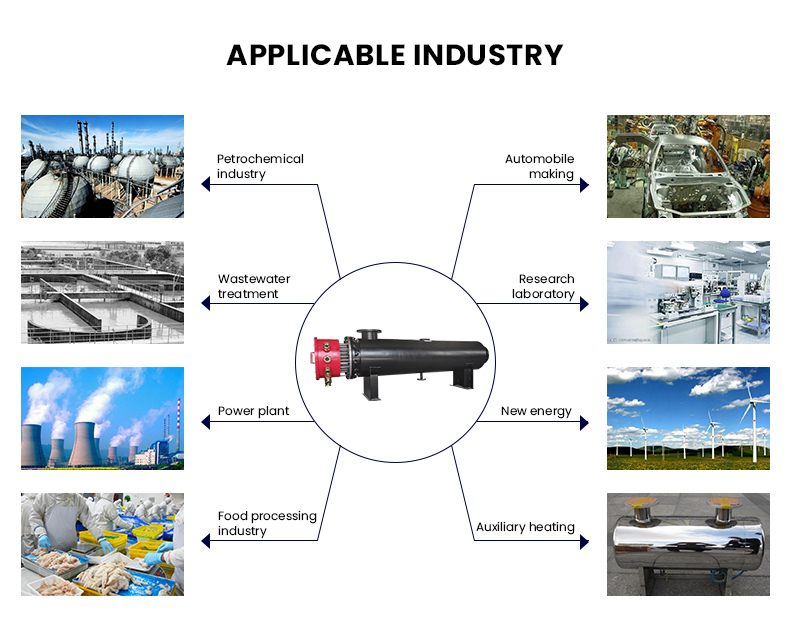
Classification of heating medium
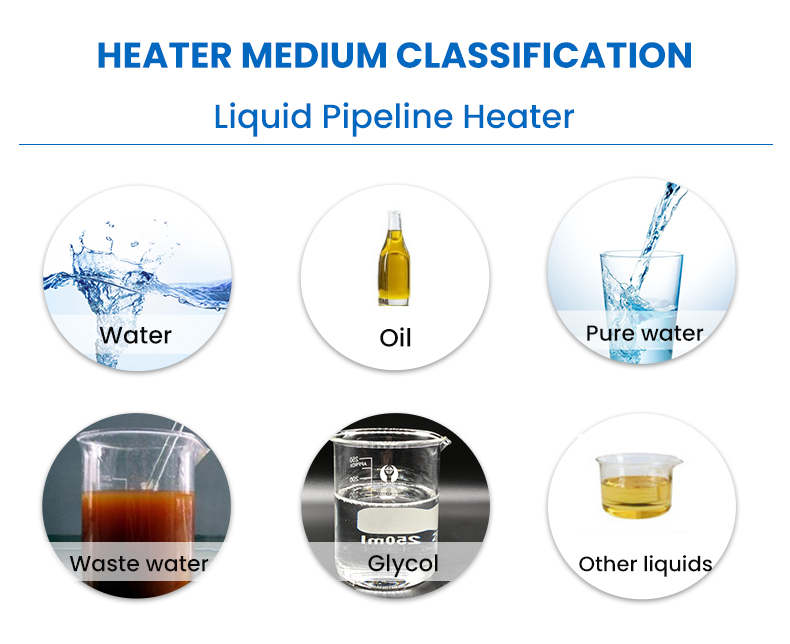
Customer use case
Fine workmanship, quality assurance
We are honest, professional and persistent, to bring you excellent products and quality service.
Please feel free to choose us, let us witness the power of quality together.

Certificate and qualification


Product packaging and transportation
Equipment packaging
1) Packing in imported wooden cases
2) The tray can be customized according to customer needs
Transport of goods
1) Express (sample order) or sea (bulk order)
2) Global shipping services










